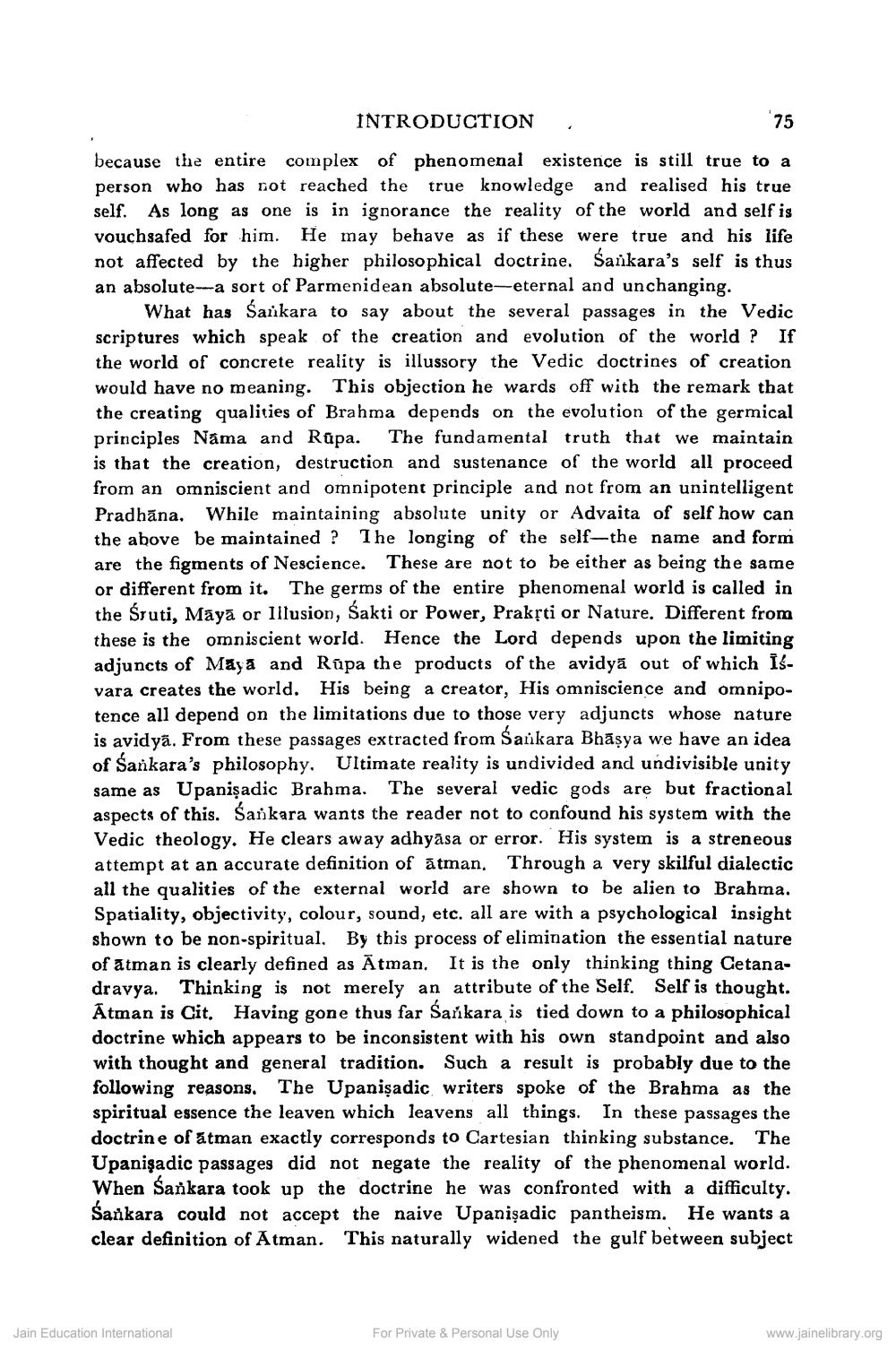________________
INTRODUCTION
75
because the entire complex of phenomenal existence is still true to a person who has not reached the true knowledge and realised his true self. As long as one is in ignorance the reality of the world and self is vouchsafed for him. He may behave as if these were true and his life not affected by the higher philosophical doctrine. Sankara's self is thus an absolute-a sort of Parmenidean absolute-eternal and unchanging.
What has Sankara to say about the several passages in the Vedic scriptures which speak of the creation and evolution of the world? If the world of concrete reality is illussory the Vedic doctrines of creation would have no meaning. This objection he wards off with the remark that the creating qualities of Brahma depends on the evolution of the germical principles Nama and Rupa. The fundamental truth that we maintain is that the creation, destruction and sustenance of the world all proceed from an omniscient and omnipotent principle and not from an unintelligent Pradhana. While maintaining absolute unity or Advaita of self how can the above be maintained? The longing of the self-the name and form are the figments of Nescience. These are not to be either as being the same or different from it. The germs of the entire phenomenal world is called in the Śruti, Maya or Illusion, Sakti or Power, Prakrti or Nature. Different from these is the omniscient world. Hence the Lord depends upon the limiting adjuncts of Maya and Rupa the products of the avidya out of which Isvara creates the world. His being a creator, His omniscience and omnipotence all depend on the limitations due to those very adjuncts whose nature is avidya. From these passages extracted from Sankara Bhāṣya we have an idea of Sankara's philosophy. Ultimate reality is undivided and undivisible unity same as Upanisadic Brahma. The several vedic gods are but fractional aspects of this. Sankara wants the reader not to confound his system with the Vedic theology. He clears away adhyasa or error. His system is a streneous attempt at an accurate definition of atman. Through a very skilful dialectic all the qualities of the external world are shown to be alien to Brahma. Spatiality, objectivity, colour, sound, etc. all are with a psychological insight shown to be non-spiritual. By this process of elimination the essential nature of atman is clearly defined as Atman. It is the only thinking thing Cetanadravya. Thinking is not merely an attribute of the Self. Self is thought. Atman is Cit. Having gone thus far Sankara is tied down to a philosophical doctrine which appears to be inconsistent with his own standpoint and also with thought and general tradition. Such a result is probably due to the following reasons. The Upanisadic writers spoke of the Brahma as the spiritual essence the leaven which leavens all things. In these passages the doctrine of atman exactly corresponds to Cartesian thinking substance. The Upanisadic passages did not negate the reality of the phenomenal world. When Sankara took up the doctrine he was confronted with a difficulty. Sankara could not accept the naive Upanisadic pantheism. He wants a clear definition of Atman. This naturally widened the gulf between subject
Jain Education International
For Private & Personal Use Only
www.jainelibrary.org




